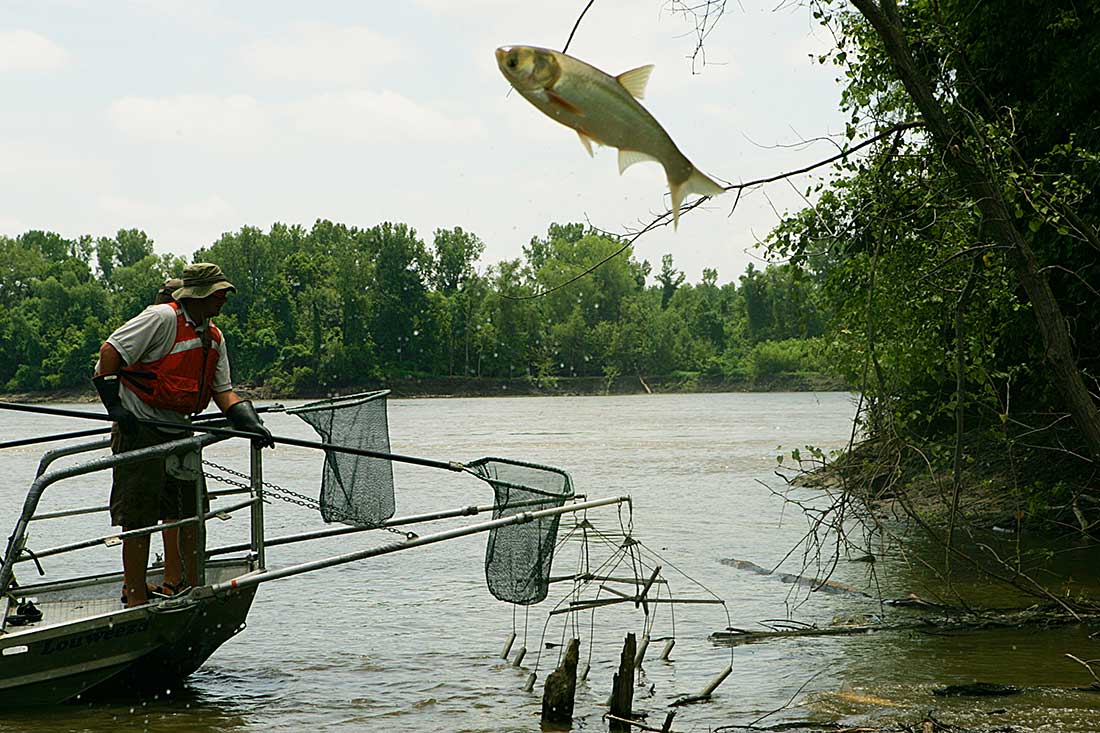By Jiefei Liu
Current barriers against Asian carp temporarily protect the Great Lakes, but fighting the invasive fish remains a challenge.
Michigan Gov. Rick Snyder announced Jan.17 a $1 million challenge for innovative solutions to the voracious carp. The challenge will be launched officially in mid-summer 2017, said Joanne Foreman, coordinator of Invasive Species Program communications at the Michigan Department of Natural Resources.
Currently, the U.S. Army Corps of Engineers operates three measures to deter fish in the Chicago Area Waterway System. According to the 2017 Asian Carp Action Plan of the Asian Carp Regional Coordinating Committee, electric barriers in the Chicago Sanitary and Ship Canal give off electrical stimuli to deter the carp. A Bypass Barrier physically blocks known bypasses around the electric barriers caused by flooding. The third barrier is bar screens on sluice gates at a key lock and dam in the Calumet Sag Channel south of Chicago.
Foreman said that in a recent test non-carp species were introduced near an electric barrier, and it was found that some small fish were able to make their way through the barrier.
Since tourism and fishery are essential to Michigan, if the carp enters Lake Michigan, it will proliferate and cause great environmental and economic loss, said Foreman. Apart from endangering local fish, she said, these carp can pose a danger to human beings. For example, the Silver carp, also known as flying carp, can jump over a small boat and knock off boaters.
Since the barriers do not kill carp, the elimination of the population depends on contracted commercial fishermen, said Kevin Irons, Asian carp expert at the Illinois Department of Natural Resources, in a phone interview.
More than 5 million pounds of carp have been harvested and the carp population has declined 68 percent, Irons said. Most of the harvested carp are made into liquid fish fertilizer, he explained.
No Bighead, Silver, or Black carp have been collected or observed in the Great Lakes since 2000, according to the Action Plan, but current data demonstrate a continued expansion of certain species in portions of the Mississippi River and Ohio River Basins.
Small Asian carp reproduction has been spotted in the downstream of the Illinois River, more than 100 miles away from Lake Michigan, said Irons, but they are small and native fish can eat them.
It’s not like some catastrophe is going to happen tomorrow, but the carp threat isn’t to be taken lightly, said Monica Blaser, public affairs specialist at the U.S. Fish and Wildlife Service, in a phone interview.
The 2017 action plan lists no fewer than 60 “strategic activities” for implementation. The governmental Great Lake Restoration Initiative proposes funding of $17 million to fight the carp, and 10 agencies, including the U.S. Army Corps of Engineers, which operates the electric barriers, propose a budget of $25.4 million.
However, the Trump administration budget blueprint released Mar. 13 proposes to slash the Environmental Protection Agency’s funding by $427 million, including the Great Lakes Restoration Initiative.
Asian carp, comprising Bighead, Silver, Black and Grass Carp, were introduced to U.S. waterways in the early 1970s to solve environmental problems. For instance, Bighead carp were imported to improve water quality in aquaculture ponds and sewage treatment lagoons.
However, with the growth of their population, they became ecological and economic concerns. Silver, Black and Grass carp were listed as Injurious under the Lacey Act in 2007 and Bighead carp were added in 2011.


